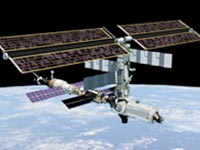ISRO launches Oceansat-2

Sriharikota, Sept 23 :
Indian Space Research Organisation (ISRO) on Wednesday added another feather in its cap with the launch of Polar Satellite Launch Vehicle (PSLV) for placing into orbit the country’s 16th remote sensing satellite, Oceansat-2, and six European nano satellites. The PSLV blasted off from the SHAR Range at 1151 hrs IST at Sriharikota on Wednesday.
The 44.4 metre tall, four-stage 230-tonne PSLV of the ISRO, took off without its six strap-on motors as all the seven satellites put together weighed less than 1000 kg.The launch is ISRO's first major satellite launch since Chandrayaan 1.
The Oceansat-2 is ISRO's second in the series of Indian Remote Sensing satellites dedicated to ocean research. The satellite will provide continuity to the applications of Oceansat-1, which was launched in 1999.Oceansat-2 weighs 960kgs and is carrying two devices: the Ocean Colour Monitor and a Microwave Scatterometer, which help in tracking the onset of monsoon by measuring the wind speed over the surface of the ocean.All data gathered will be made available to the global scientific community in six months.
The Oceansat-2 will be ejected into a sun-synchronous orbit 720 km above the earth and its moving coverage strip will be able to scan the entire planet. The orbit is designed in such a way that the satellite will cross Equator at 12 noon near India. A global leader in remote sensing data, India has so far launched 15 remote sensing satellites, of which nine are still in operation.
Oceansat-1, launched in 1999, is still in service but will slowly go into oblivion. According to ISRO spokesman S Satish, Oceansat-2 has a design life of five years and may outlive this like its earlier version.
Oceansat-2 will be used for identifying potential fishing zones, sea-state forecasting, coastal zone studies, weather forecasting and climate studies.Apart from the ISRO-developed 76 kg Ocean Colour Monitor (OCM) and a Ku-band pencil beam Scatterometer, the satellite will also have a Radio Occultation Sounder for Atmospheric Studies (ROSA) developed by the Italian Space Agency.
The Scatterometer, with a ground resolution of 50 km x 50 km, is expected to provide accurate information on wind speed and direction. The eight-band OCM, with a 360-metre spatial resolution and a swath of 1,420 km, will provide information about a particular area every two days. According to Satish, ISRO would earn an unspecified amount of dollars as the carriage fee from the European owners of the six nano satellites piggy backing on Oceansat-2.



